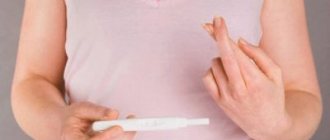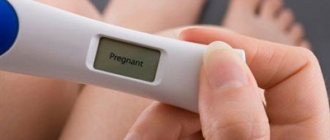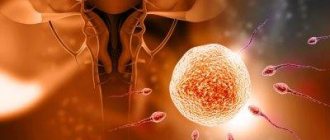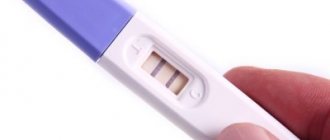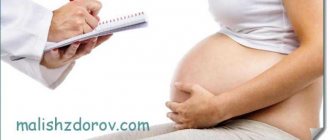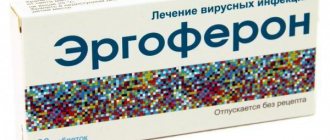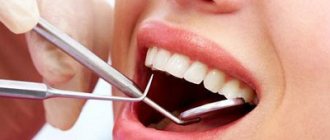Pros and cons
It is strongly not recommended to have your navel pierced during pregnancy. Firstly, this can negatively affect the child, secondly, there is a risk of infection and, thirdly, the wound will take longer to heal than usual. But even when carrying a child, in some cases it is prohibited to wear jewelry.
If a woman got a piercing while in the first weeks of pregnancy, but did not suspect it, then she should carefully monitor the hygiene of the hole. The immune system is weakened and infections can easily penetrate, so you need to thoroughly disinfect the puncture site and wipe it regularly.
Some women who wore piercings until childbirth complain of changes in the size of the piercing and stretch marks in the navel area. Therefore, it is safer to wait and wear jewelry after the birth of the child.
Is it possible to pierce the navel in the early stages?
If the piercing was done long before conception, then in the first months, when the belly is small, the jewelry can be worn.
As soon as unpleasant sensations appear (with a protruding navel, large belly), you need to remove the earring.
It can bring additional discomfort - rubbing the navel, causing inflammation and irritation, and leaving stretch marks.
If the patient wants the hole not to heal, then a silk ribbon can be inserted, this is safe, or a polytetrafluoroethylene (PTFE) decoration can be inserted.
Is it worth wearing in later stages?
In the last stages of pregnancy, the belly is of impressive size, the navel often protrudes. Therefore, decoration is inappropriate and will only cause unpleasant sensations.
Doctors will definitely ask you to remove the product before childbirth, regardless of the method: natural or cesarean section. After the baby is born, you can insert the decoration in its usual place, observing safety precautions and hygiene rules.
The piercing should be removed at the first symptoms of discomfort.
When to remove a belly button piercing: indications
Be sure to remove the earring in case of pain, wounds, inflammation or irritation.
The navel contains an important node of blood vessels; if an infection occurs, serious problems with the condition of the woman and fetus can arise.
During pregnancy, the immune system is weakened and most vulnerable.
Before giving birth, the obstetrician will also ask you to remove the jewelry.
The piercing will have to be removed for the ultrasound procedure.
Piercing and pregnancy
The question of whether piercing is possible during pregnancy and whether there are any special features of such piercing has two mutually exclusive answers: yes and no.
Yes: if the piercing was done a long time ago, the piercings have healed and you feel comfortable with the jewelry.
No: if you are going to get piercings during pregnancy, especially nipple, navel, and genital piercings.
In addition, if you are not going to part with jewelry after childbirth and breastfeeding, you just need to know about PTFE - polytetrafluoroethylene, or Teflon, which will be very useful to you in order to maintain the piercing during pregnancy and in no case harm yourself or the baby.
Read below about all the nuances related to the issues raised. But there are nuances. What to be afraid of even with completely healed punctures? What to do with nipple piercings? What materials can be used for decorations? Do I need to remove jewelry before going to the hospital? Etc. Piercing during pregnancy: nuances, possibilities and prohibitions New piercing during pregnancy and untreated punctures
The pregnancy period is characterized by changes in a woman’s body not only at the physical level, but also at the biological level. The body is a finely tuned system, and any failure leads to negative consequences; even a common runny nose can affect both the expectant mother and the baby.
Do you really need a new piercing during pregnancy? The puncture may affect biologically active points, of which there are many in traditional puncture sites. In addition, the puncture sites are abundantly supplied with blood vessels, so even a mild infection has every chance of leading to a severe inflammatory process.
You should also exclude insufficiently healed piercings during pregnancy, starting from the very first days. Even with absolute sterility, the inflammatory process that occurs during healing can lead to negative consequences, including miscarriage. Therefore, when pregnancy occurs, you should immediately remove jewelry from unhealed punctures and allow the punctures to heal, carefully adhering to all hygiene requirements. Piercing during pregnancy with old punctures. PTFE and decoration materials
If your piercing is 2-3 years old and the piercings are completely healed, then there is no reason to refuse it due to pregnancy. But only as long as you feel comfortable.
First of all, take care of your navel piercing. At the slightest sign of discomfort, the decoration should be removed. And best of all - already with the initial increase in the abdomen. To prevent the puncture from healing and nothing will disturb you until the birth, use jewelry made of PTFE, its more familiar name is Teflon. PTFE is a unique polymer with exceptional physical and chemical properties
It is exceptionally resistant to temperature changes and always remains flexible - in any cold or heat that a person can endure. PTFE is not wetted by water, organic solvents, or fats; therefore, bacteria simply cannot grow on it, since there are no conditions for their vital activity.
In terms of resistance to chemically active substances, PTFE is superior even to noble metals: it is inert to alkalis, acids and even “regia vodka” - a mixture of nitric and hydrochloric acids, which also dissolves gold.
PTFE is actively used in medicine, as it has the highest degree of compatibility with the human body. It is used in transplantology and bioengineering. It does not cause rejection or irritation, is elastic, and at the same time fantastically durable. You can use it for any procedure, both cosmetic and therapeutic.
The aesthetic properties of PTFE are very diverse: you can choose a transparent material that no one will even notice, you can use jewelry in which transparent PTFE is the frame, for example, for a beautiful crystal - this looks very impressive not only on pregnant women, you can buy colored plastic, including fluorescent pigments that “light up” in ultraviolet light. By the way, you can make jewelry from PTFE yourself - it’s not at all difficult. Other materials for piercing during pregnancy
Piercing jewelry is made from a wide variety of materials: ivory, wood, plastic, gold, platinum, silver, surgical steel. However, if in a normal state you should approach the choice of material extremely responsibly - you should not be allergic to the material, it should be inert to external influences, etc., then in a state of pregnancy you are responsible not only for yourself, but also for baby's life, so be as careful as possible!
We talked about the best option - PTFE decoration - above. What else can you use? Titanium, bioplastic, noble metals - platinum, gold, high-grade silver. However, some people, although extremely rarely, are allergic to these metals. Sometimes it can only appear during pregnancy. If any unpleasant sensations occur in the puncture area, the jewelry should be removed immediately!
Does not cause allergies, surgical steel is inert to influences. But piercing during pregnancy, especially in the navel and nipple area, is accompanied by changes in body proportions, and therefore jewelry made from inelastic materials can lead to injury, and even rupture in the navel area. Nipple piercing and pregnancy
The most controversial issue of piercing during pregnancy is nipple piercing. Some experts say that there is nothing wrong with wearing nipple jewelry (remember that we are only talking about fully healed piercings that are 2-3 years old!). Others advise, at the first news of pregnancy, to take out your jewelry and let your nipples close so that lactation (milk feeding) occurs without any “surprises.”
As with everything, there is no clear answer to this question. If you are not going to breastfeed your baby, then you should only take care of your own well-being (this is discussed just above). If breastfeeding is expected, it may be necessary to actually close up the extra holes.
But if you decide to both feed the child and keep the piercing during pregnancy, then you definitely cannot do one thing - feed the child with the jewelry not removed! It is forbidden! Such exoticism can lead to dire consequences - a child may simply swallow the decoration or choke on it. And you shouldn’t think that everything is fixed well and the baby will never be able to do this: experienced mothers know with what incredible force a child is capable of sucking - he can break through the skin and... Is this possibility worth the dubious beauty during pregnancy? To the maternity hospital
When going to the maternity hospital, you should take off your jewelry - you simply won’t be allowed into the maternity room with it. The only exception can be a preliminary agreement if, for example, you give birth in a private clinic. But it is imperative to discuss the presence of a piercing in advance!
Piercings preserved during pregnancy, if they do not cause discomfort and have healed long ago, should not become an obstacle during childbirth. Even if you have a caesarean section, the navel piercing will not be affected: the incision is made closer to the groin area.
The general conclusions from all that has been said are as follows:
healed piercings during pregnancy are not contraindicated as long as they do not cause discomfort; the best material for jewelry is PTFE; It is generally undesirable to do nipple piercing before pregnancy, but if it exists, you should under no circumstances feed the baby with mother’s milk without removing jewelry; when going to the maternity hospital, all jewelry must be removed unless there has been a prior agreement with the doctor; Maintaining strict personal hygiene when wearing piercings during pregnancy is especially important.
Be healthy - both you and your baby!
If your navel piercing itches during pregnancy, should you remove it?
Itching during pregnancy is a normal phenomenon. The navel experiences stress from the growing uterus and abdominal muscles, which is why such sensations occur. When there is a piercing in it, it can cause additional discomfort, especially starting from the fifth or sixth month. Therefore, starting from the second trimester, doctors advise removing jewelry.
The product may cause itching, inflammation and irritation. The desire to scratch your belly sometimes arises because of a worn-out earring, because it rubs your protruding navel or because the material from which the product is made causes an allergic reaction.
You should remove the jewelry as soon as unpleasant sensations arise, so as not to cause negative consequences.
If you don’t want to remove the decoration, then you should replace it with a more flexible one made of anti-allergenic material, such as polytetrafluoroethylene.
But even after removing the piercing, you need to take care of the puncture site:
- Wipe regularly with a hygiene product.
- Lubricate with oil or cream to prevent the hole from stretching.
- Use a disinfectant to prevent infection.
How often can you change your decoration?
Surely, the one who decided on this procedure, even after learning about all its difficulties and disadvantages, mentally paints a picture of how he will change the jewelry, depending on his mood or the weather outside the window! On the one hand, this is true to some extent, with only one small clarification: it will be possible to change earrings and other accessories only when the channel is fully formed.
How long does this take? It is almost impossible to answer this question unambiguously; you should be patient. However, during this period it may happen that a woman needs to change the inserted jewelry for various reasons. Most often this happens due to the fact that the body rejects the selected material; in other words, it is not suitable for a particular woman. This does not mean that the decoration is bad or of poor quality - rather, it is a question of individual intolerance.
So, regardless of the reasons, you are faced with a fact: you need to change your decoration. What is needed for this? The most logical answer, lying on the surface, is to visit the salon where you had your piercing done and get advice both on choosing a new piece of jewelry and on the procedure for replacing it. You should immediately accept as a fact that in a short period of time from the moment of puncture, this procedure can be painful, and therefore it is better to trust the specialists.
On the other hand, you can try to replace the jewelry yourself, but to do this, first of all, you should try to create conditions of maximum sterility, and on the other hand, make sure that a minimum period of time passes between the removal of one jewelry and the insertion of another. The fact is that the body, having gotten rid of the foreign body, begins active regeneration processes, which means that even a few hours can do the trick and make you face the need for a re-puncture.
Considering the peculiarities of piercing in this area of the body, it would be most reasonable to replace the earring in an unhealed wound using an intravenous catheter. To do this, you need to buy a catheter No. 16 at the pharmacy, cut off a piece of tube of the required length, place it under the earring, first twisting the ball, then insert it into the puncture, remove the earring, insert a new one and remove the catheter tube. This procedure will allow you to minimally disturb the open wound and do everything quickly and painlessly.
As for the question of how often you can change jewelry in an already healed piercing, there are no restrictions: change it at least for every new outfit. Most importantly, thoroughly treat both your hands and the accessories themselves with a disinfecting solution immediately before insertion, regardless of how much time has passed since the puncture. Of course, it is very difficult to introduce an infection into a formed canal, but it is still not worth the risk.
Is it possible to change the earring in the navel during pregnancy?
You can change jewelry during pregnancy, but with caution:
- The material of the product must not cause allergies or discomfort. It is recommended to exclude gold and metal earrings.
- Wash your hands with soap and water before your shift.
- Treat the puncture with a disinfectant.
- New jewelry should also be thoroughly wiped and disinfected.
- Carefully push into place.
Doctors strongly advise removing piercings in the second trimester. You need to focus on your well-being, discomfort and growing belly, when jewelry can rub, cause inflammation or irritation.
If the patient wants to wear the product before giving birth, then an earring made of flexible material should be used so that it can bend to the shape of the abdomen. The most commonly used is Teflon or another name - polytetrafluoroethylene.
Navel piercing at different stages of pregnancy
In early pregnancy, until the belly begins to enlarge, the piercing will not cause you any discomfort. But at a later date, the skin will stretch, and the diameter of the puncture may increase. In some cases, inflammation may occur in this area of the body. When the skin on the abdomen stretches, the navel begins to bulge under the pressure of the uterus, and the jewelry in the navel rubs and clings to clothes. This can cause irritation, redness and even tearing. Therefore, in the later stages of pregnancy (after 7 months), it is advisable not to wear any jewelry in the navel.
Usually, a woman can wear jewelry in her navel until 5-6 months of pregnancy without any problems. After this, you can wear jewelry made of flexible materials - for example, Teflon, which can bend under the pressure of the uterus. In addition, instead of an earring, you can wear a regular silk thread. Of course, it will not replace jewelry, but it will not allow the puncture to heal until the end of your pregnancy.
After you remove the jewelry, you need to monitor the condition of your navel. You should have an antiseptic on hand to treat the area if any signs of infection appear. If the skin around the puncture begins to become inflamed or develops an abscess, consult a doctor immediately.
Use special creams and oils throughout your pregnancy. Lubricate the abdomen, including the puncture site, with it to make the skin more elastic. Also, clean your belly button and the skin around it regularly using soap and water.
Despite all the precautions taken, during pregnancy, scars may occur at the puncture site. Often after childbirth they become invisible, but if this does not happen, they can be eliminated with a laser.
Is it possible to give birth with a piercing in the navel?
Childbirth with piercings is unacceptable.
Of course, some doctors may leave an earring in the navel during a natural birth, but this is rather an exception or by agreement in a private clinic. During a caesarean section, the jewelry must be removed. You should not wear the product immediately after the birth of your child; it is advisable to wait a couple of months to strengthen and restore the body.
Piercing while pregnant is not the most appropriate and safe decoration.
Doctors strongly do not recommend getting your navel pierced during pregnancy and not wearing jewelry until after birth. A woman should understand all the risks that this small product may pose. It is better to wear the earring in a couple of months, when the body and stomach return to normal. The baby’s own health and safety should be a priority at such an important moment in life.
Is it possible to get piercings during pregnancy?
A girl always wants to remain beautiful, and such a period of life as pregnancy is no exception. And of course, sometimes you want to change your appearance and bring something new to it.
Is it possible to get a piercing while pregnant?
If you want to get a piercing done here and now, without expectations, you need to weigh the pros and cons so as not to expose yourself and your child to unnecessary risk.
During pregnancy, the body receives enormous stress and the immune system is weakened. This can lead to the puncture site taking a long time to heal , or in the worst case, inflammation will begin when an infection occurs, while the body of a non-pregnant woman could cope with such a problem.
Other features depend directly on what type of piercing is chosen.
It is strictly forbidden to pierce nipples and other intimate places. It doesn’t matter whether breastfeeding or artificial nutrition is planned - a woman’s breasts change during pregnancy and the piercings are likely to become very inflamed.
The safest is ear piercing . This is a virtually painless procedure, very quick, and does not require anesthesia. Holes in the ears heal the fastest, especially in the warm season.
More complex procedures may require pain relief, which is not beneficial for the child. At the same time, the pain experienced by the pregnant woman will also be felt by the baby.
How to Maintain a Navel Piercing During Pregnancy
It is not uncommon for young mothers to remove jewelry before giving birth in order to preserve the piercing, and before that they must agree with the following points. This is necessary in order to minimize stretch marks.
- Your navel does not stick out much, which means the jewelry will cling to a minimum
- The fact is that the skin from scars is rougher and will require careful lubrication with ointments that soften the skin.
- You also need to look at how the puncture is made; it should be slightly inclined, this is necessary so that the tissue does not tear too much when the tummy begins to grow.
If you can answer yes to the previous two points, then the jewelry can be removed immediately before giving birth. But this does not give a 100% guarantee that you will not develop skin stretching; it can happen even if you remove the jewelry early.
According to observations on the forum, the navel closes very poorly during pregnancy, apparently due to the fact that the skin stretches and the immune system weakens. This combination of factors makes it possible to wear your much-loved jewelry again after giving birth.
Preventive measures
To prevent inflammation, your navel piercing needs to be taken care of regularly. During pregnancy, the area requires increased attention, as it is directly related to the fetus. Prevention methods:
- Treat your navel with an antiseptic daily. The safest substances are alcoholic tinctures of herbs, such as calendula or chamomile.
- To make the skin in the abdominal area more elastic, use special creams and ointments.
- An effective remedy for stretch marks and skin damage is cold-pressed unrefined coconut oil. It is recommended to do an allergy test before application.
Don't forget about standard hygiene rules. Shower daily using soap or neutral gel. At the end of the procedure, wipe the puncture site dry.
A stretched, pierced navel after childbirth is a common problem that occurs when the skin's elasticity is weak. If you encounter it, contact an experienced piercer, he will give advice based on the condition of the piercing. You may just need to wait for the wound to heal on its own. In the most severe cases, the puncture is healed. The small scar is then removed using a laser. If you wish, you can get a new piercing or refuse to wear a piercing.
How to remove a nose piercing during pregnancy
Speaking about nose and ear piercings, you can immediately clarify that these jewelry do not have to be removed, they can remain not only during pregnancy, but also during childbirth.
According to Iffat A. Hoskins, MD, piercings even in such minor places can cause discomfort for a pregnant woman.
This may be true, because during pregnancy the skin stretches and you may feel uncomfortable. In this situation, the earrings can be replaced with another pliable material or removed altogether. You can deal with this yourself.
Piercing the tongue or nose will not interfere with the birth process, even if general anesthesia is used. The same cannot be said for genital piercings, which increase the likelihood of tearing.
What materials are best to choose jewelry from during pregnancy?
In the process of bearing a baby, it is better to give up gold, silver, and especially metal jewelry. Doctors advise choosing PTFE (Teflon), since, due to its qualities, it cannot be a place for the proliferation of bacteria and infections. This material is actively used for medical purposes, since it is more compatible with the human body than any other.
Transplants are made from Teflon and are actively used in bioengineering. Its advantages also lie in the fact that it is not rejected by the human body, does not cause irritation, is plastic, but at the same time is the most durable of existing materials.
Teflon jewelry can be left on even during cosmetic and even medical procedures. Nowadays, PTFE jewelry is being actively created and is in demand. They can be completely transparent and almost invisible to the human eye, but at the same time, your puncture will not heal. Also, the transparent base can be used as a cut for a beautiful or even precious stone - such jewelry is in great demand not only among expectant mothers.
Also, special components can be added to PTFE that will glow in the dark. So you can choose excellent substitutes for precious metals that will look no worse, but at the same time, will not harm your health, as well as the health of your child.
There are also other materials for piercing:
• Wooden decorations; • Made of ivory; • Plastic pendants; • Gold; • Platinum; • Silver; • Made from surgical steel. You need to understand that during pregnancy you should be doubly careful when choosing the material from which the jewelry is made. It is necessary to exclude those to which you have an allergic reaction, as well as those that are not a favorable environment for the proliferation of various bacteria and microorganisms.
Keep in mind that while carrying a child, an allergy can appear even to materials and metals that have never occurred before. Therefore, if you suddenly begin to feel discomfort in the puncture area, it is necessary to urgently remove all jewelry in order to avoid unwanted consequences, including inflammatory processes.
Surgical steel is also one of the popular materials for prising, however, it is inelastic.
In this regard, while carrying a child, you should not wear such jewelry, since if the “volume” of the body changes, they can cause serious injury or rupture. In connection with the above, we recommend that you still opt for PTFE jewelry, as it is the safest
Should I remove my piercing before going to the hospital?
Even if you managed to wear the piercing throughout your pregnancy, you will still have to remove it before the maternity hospital, since in the maternity hospital you will still be forced to do it.
The ban on wearing jewelry in the maternity hospital only applies if you are going to bed by appointment or plan to give birth in a paid clinic.
However, the presence of a piercing, and the desire to leave it for the entire stay in the maternity hospital, must be discussed in advance.
If the piercing does not bring you any unpleasant sensations and the punctures are successfully healed, the jewelry will not interfere with the birth process, even if the operation is scheduled - a caesarean section. Beauty, of course, requires sacrifice, but in no case at the cost of your health and the health of your unborn child. Be healthy!
Can pregnant women have their ears pierced?
During pregnancy, a woman bears a great responsibility - for her health and for the health of the baby inside. Having learned that she will soon become a mother, many questions arise, the main ones of which are what she can now do and what she cannot do.
One of the questions that concerns appearance is: is it still possible to pierce a pregnant woman’s ears or not?
Only a specialist observing you can answer this question.
Only a doctor who has assessed the condition of the expectant mother and the unborn child can suggest the right decision. Generally speaking, at the moment medicine does not prohibit pregnant women from having their ears pierced. The same cannot be said about traditional medicine. She explains this by saying that the entire auricle is covered with points that are connected to the internal organs and any impact on them will have a certain effect. Therefore, try to consult a specialist.
What is piercing?
Piercing (translated from English as “piercing”) is a type of modification of one’s own body by piercing the skin with the further purpose of wearing jewelry. The concept of “piercing” implies not only the piercing process itself, but also the holes that are created during it, as well as jewelry.
Modern piercings are done on almost any part of the body, but the most popular are:
Modern salons are ready to offer their services for piercing any part of the body, by certified professional workers with medical education.
Important! Piercing of intimate places is becoming increasingly popular.

